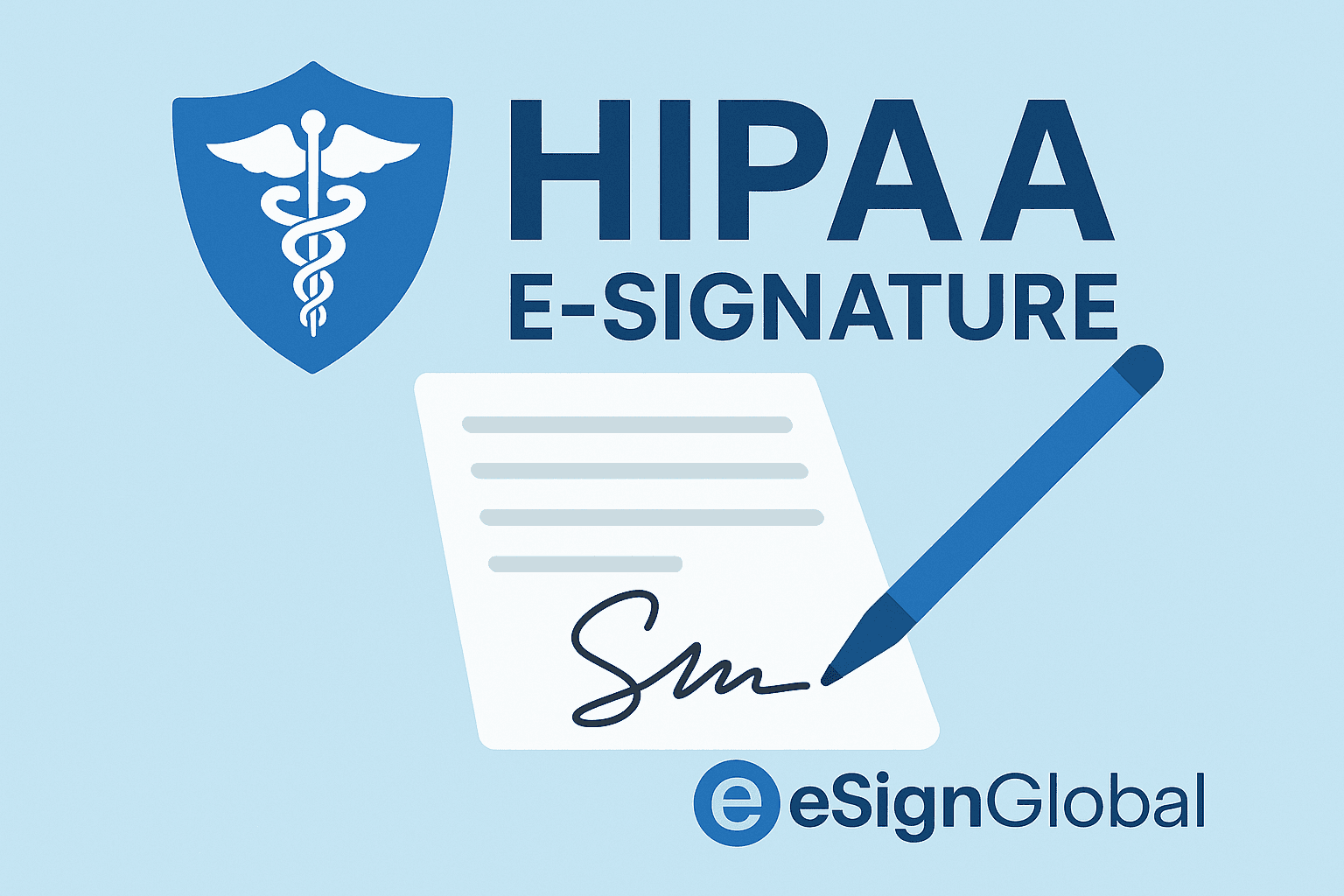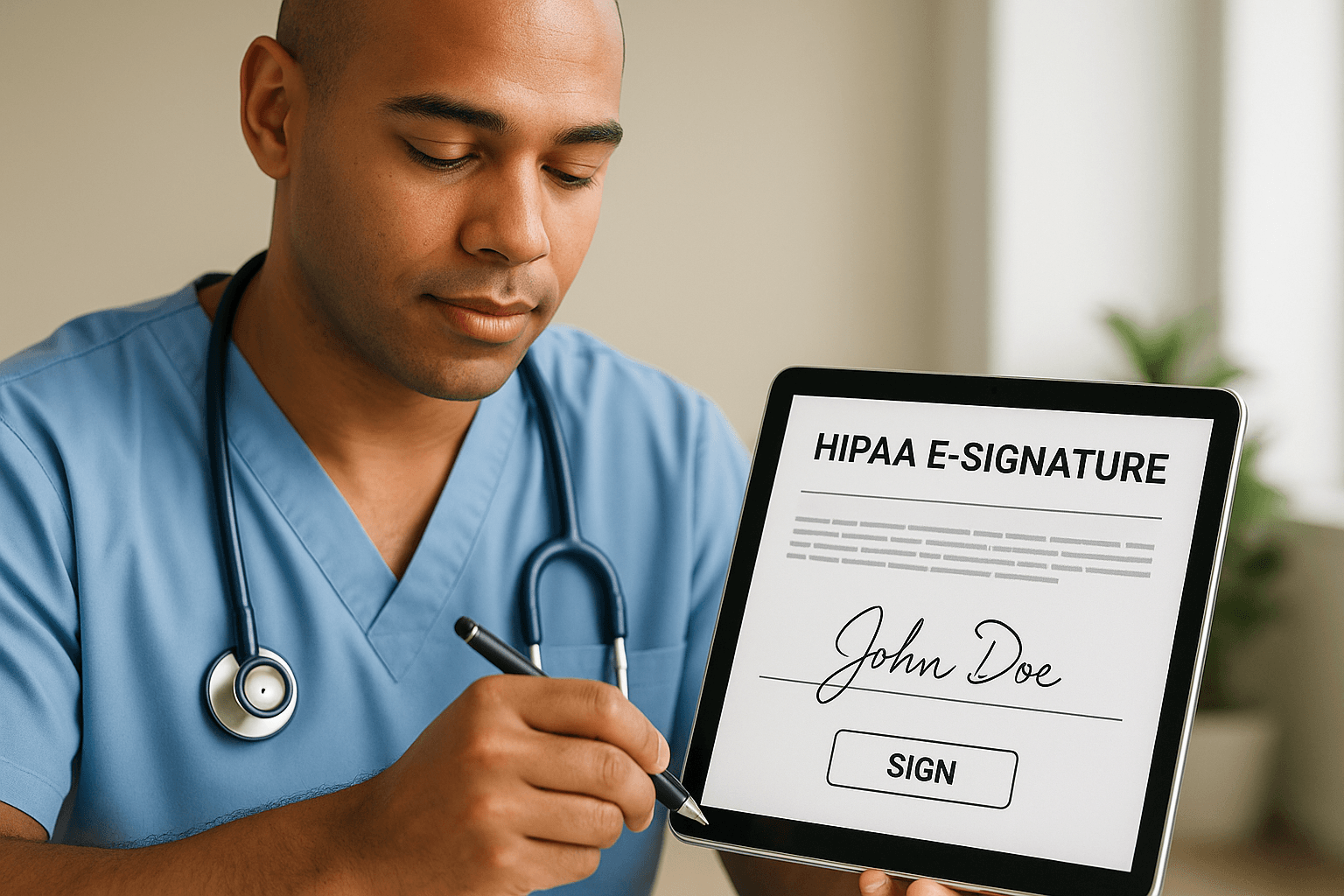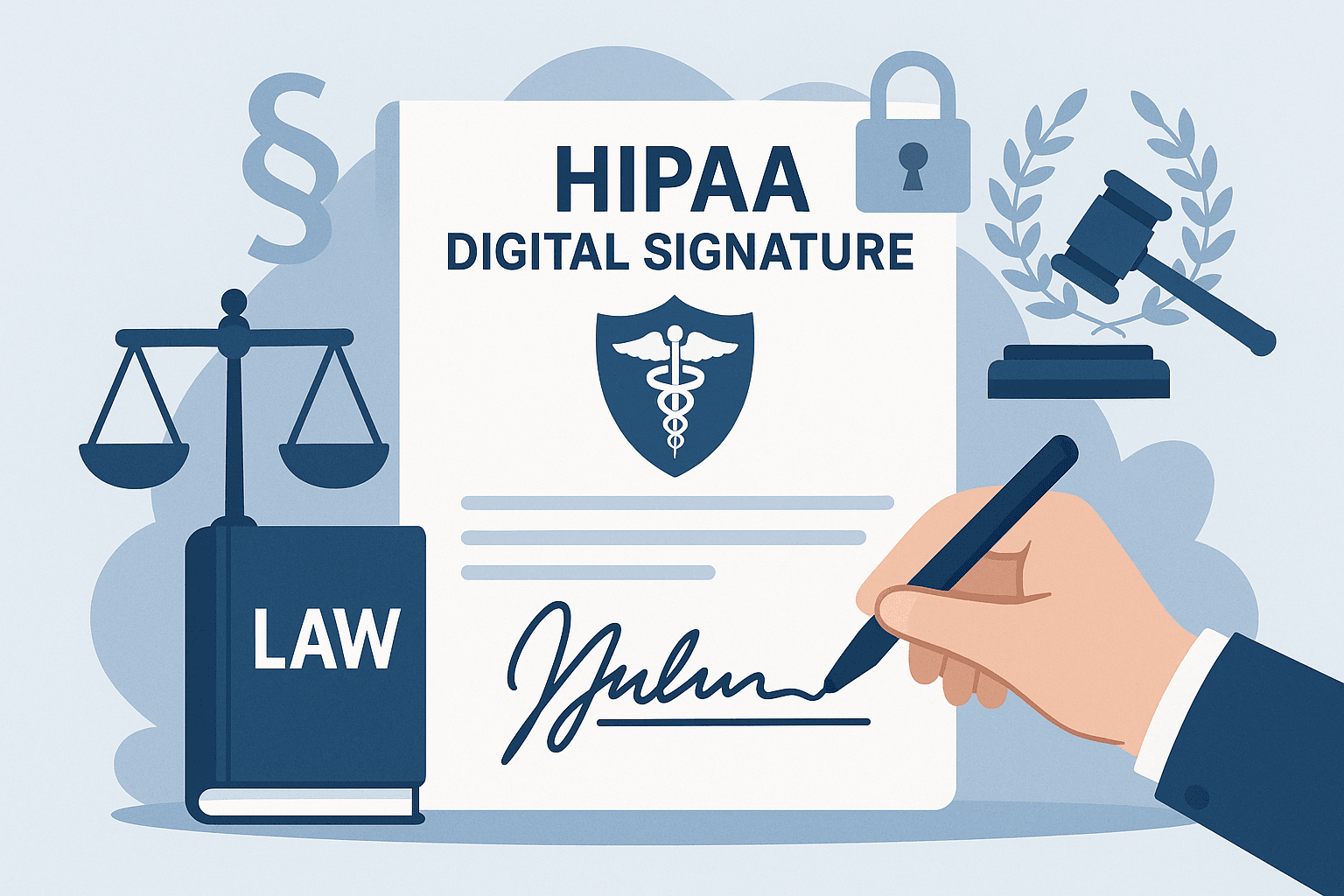WhatsApp or email with our sales team or get in touch with a business development professional in your region.
Best Digital Signature Software - Compliance Standards





HIPAA Compliance and E-Signature Technologies: How Healthcare Organizations Can Securely Go Digital
Healthcare providers and insurers are navigating a dual challenge: the urgency of digital transformation and the unforgiving landscape of regulatory compliance. The Health Insurance Portability and Accountability Act (HIPAA) establishes strict guidelines governing how patient information must be handled, stored, and transmitted. Yet, as demand for efficiency and remote services increases, relying on paper-based processes is simply unsustainable. Electronic signatures (e-signatures) and digital signatures are increasingly becoming essential tools for contract lifecycle management, patient intake, and internal workflows—provided they meet the security and privacy obligations set by HIPAA.

E-Signature vs. Digital Signature: A Crucial Distinction for HIPAA
E-signatures are broadly defined as any electronic method that indicates acceptance or approval of a document. That includes typed names, checkbox consent, or handwritten signatures captured via tablets. Digital signatures, in contrast, refer to a subset of e-signatures that use cryptographic algorithms—particularly Public Key Infrastructure (PKI)—to authenticate identity, ensure document integrity, and provide tamper-proof audit trails. For HIPAA-regulated entities, this differentiation matters. The law does not prescribe a specific technology, but mandates that electronic transactions involving Protected Health Information (PHI) adhere to specific security standards around access control, auditability, and transmission security.
A digital signature fulfilling these technical safeguards offers a much stronger case for HIPAA compliance than a simple e-signature relying on basic user action.
Market Insights: Explosive Growth Driven by Remote Healthcare and Compliance Demands
According to a 2023 report by MarketsandMarkets, the global e-signature market is projected to reach $35.7 billion by 2029, growing at a compound annual growth rate (CAGR) of 32.1%. Healthcare is among the fastest-growing verticals adopting e-signature solutions, spurred by telehealth expansion and patient demand for digital-first interactions. A parallel Gartner study notes that by 2025, 80% of healthcare organizations will have replaced paper-based patient onboarding with digital workflows.

Healthcare stakeholders are not just seeking faster execution—they require platforms that comply with local and international data protection regulations, including HIPAA in the U.S., LGPD in Brazil, and soon, the Personal Information Protection Law (PIPL) in China. Global harmonization efforts only underscore the need for high-integrity solutions from the outset.
Technology and Legal Frameworks: Ensuring HIPAA-Grade Security in E-Signatures
At the heart of secure e-signature implementation in healthcare lies three core elements: authentication, tamper detection, and traceability. Public Key Infrastructure (PKI) serves as the backbone, issuing unique digital certificates that link user identity to the signature process. Layered encryption ensures document integrity, while timestamped logs maintain traceable audit trails—essential in proving regulatory compliance.
Legally, U.S.-based providers must consider the ESIGN Act and UETA, both of which recognize electronic signatures as legally valid. However, HIPAA adds a layer of responsibility: any covered entity transmitting PHI electronically must implement appropriate technical safeguards as defined by the HIPAA Security Rule. These include access control, person/entity authentication, data integrity controls, and transmission security.
In complex use cases—such as submitting consent forms, employment contracts, or specialist referrals involving PHI—the integration of these technologies with HIPAA-compliant commitments is not optional; it is critical.
Leading E-Signature Platforms for HIPAA Compliance
When it comes to selecting an e-signature solution for healthcare settings, not all platforms are made equal. Below is an analysis of key vendors based on security protocols, pricing, HIPAA-readiness, and market positioning.
eSignGlobal
Positioned as a leading Asian SaaS innovator, eSignGlobal has emerged as a formidable alternative to global giants like DocuSign and Adobe Sign. The platform supports full PKI-based digital signatures, granular audit trails, and customer-controlled key management—all pivotal for HIPAA compliance. Notably, eSignGlobal enables on-premise deployment models for hospitals requiring full data sovereignty. A recent case study demonstrated how a midsize healthcare provider reduced contract turnaround time by 40% after switching from manual processes to eSignGlobal.
DocuSign
Often regarded as the gold standard, DocuSign offers an extensive track record in regulated sectors. The platform provides Business Associate Agreements (BAAs) essential for HIPAA compliance, supported by robust infrastructure built around AES 256-bit encryption and comprehensive logging features. However, pricing may become a concern for smaller providers.
Adobe Sign
Adobe’s solution emphasizes deep integration with its Document Cloud suite and promotions around legal enforceability. Its HIPAA-ready offering ensures all protected data is stored within compliant systems, and audit trails are time-stamped and sealed. The interface is particularly intuitive for larger enterprise teams.
HelloSign
Now rebranded as Dropbox Sign, HelloSign is known for simplicity and developer-friendliness. It offers BAAs and secured workflows for HIPAA-focused clients. Despite its clean user experience, features like in-depth audit trails and custom integrations may lag behind heavier enterprise needs.
PandaDoc
A strong option for SMBs offering sales and document automation. PandaDoc includes e-sign features that are HIPAA-capable if configured properly. However, integrations with healthcare platforms (EHR/EMR systems) are not as extensive compared to more healthcare-focused tools.
SignNow
Part of the airSlate business cloud, SignNow provides cost-effective document workflows with flexible APIs. It supports HIPAA compliance through BAAs, and is a viable DocuSign alternative for teams with limited budgets and straightforward needs.
Zoho Sign
Zoho’s offering integrates well into its suite of productivity tools. While it supports signer authentication and encryption, HIPAA compliance depends on subscription level and specific deployment—important considerations for regulated users.

Practical Considerations for Healthcare Organizations of All Sizes
For small to medium-sized medical practices, cost-efficiency and ease of use are paramount. Platforms like eSignGlobal and SignNow present HIPAA-compliant solutions without enterprise-level complexity. Their flexible deployments and straightforward user onboarding minimize operational friction while meeting regulatory demands.
Larger healthcare systems—for example, hospital groups spanning multiple jurisdictions—require more than just compliance paperwork. They need advanced workflow automation, delegated signing authority, and integration with EHR platforms like Epic or Cerner. Here, DocuSign and Adobe Sign, with their proven interoperability and legal durability, continue to dominate.
Multinational healthcare corporations must additionally consider regional compliance laws beyond HIPAA. Tools supporting localized hosting (eSignGlobal, Adobe Sign) become invaluable in aligning IT and legal frameworks globally, especially when balancing rules from the EU (GDPR, eIDAS) or APAC privacy regimes.
Guidance from the Field
The key when implementing any e-signature solution in healthcare is rigorously vetting its ability to protect PHI both at rest and in transit. Merely checking for HIPAA-ready labels is insufficient—organizations must assess audit log architecture, identity verification methods (multi-factor authentication, biometric verification), versioning capabilities, and the availability of signed BAAs.
As providers continue to shift critical operations to digital touchpoints, solutions like eSignGlobal are reshaping how care providers model trust, speed, and compliance—without compromise.

Shunfang
Head of Product Management at eSignGlobal, a seasoned leader with extensive international experience in the e-signature industry.
Follow me on LinkedIn
Get legally-binding eSignatures now!
30 days free fully feature trial
Business Email
Get Started
 Only business email allowed
Only business email allowed
Latest Articles


